9.6 /10 1 Votes
5/5 Lets Play GB Initial release date 24 November 1989 | 4.5/5 Emuparadise | |||||||||||||||||||||||||||||||||
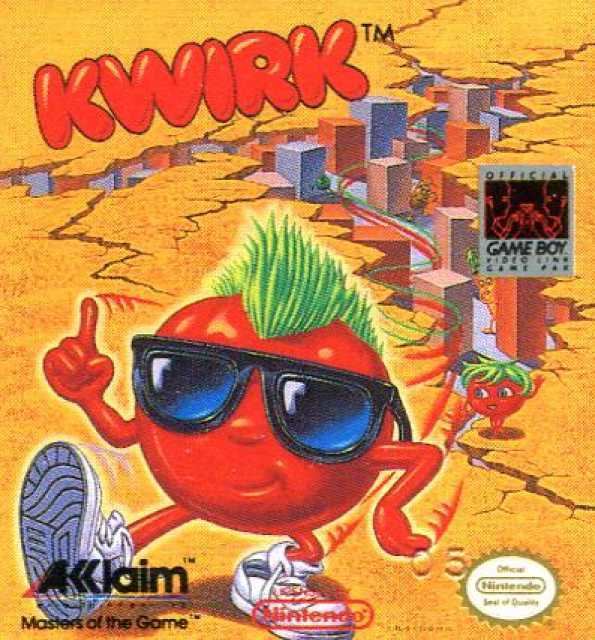 | ||||||||||||||||||||||||||||||||||
Modes Single-player video game, Multiplayer video game Similar Atlus games, Puzzle video games | ||||||||||||||||||||||||||||||||||
Classic game room kwirk review for game boy
Kwirk, known in Japan as Puzzle Boy (パズルボーイ, Pazurubōi), is an action/transport puzzle video game first developed and published by Atlus in Japan on November 24, 1989 for the original Game Boy. The game was later published in North America in March 1990 by Acclaim Entertainment. On February 22, 1991, Atlus ported and released Puzzle Boy to the PC Engine/TurboGrafx-16 exclusively in Japan.
Contents
- Classic game room kwirk review for game boy
- Cgr undertow kwirk review for game boy
- Story
- Gameplay
- Going Up
- Heading Out
- Vs Mode
- Obstacles
- Kwirks Veggie Friends
- Reception
- Legacy
- References

Cgr undertow kwirk review for game boy
Story
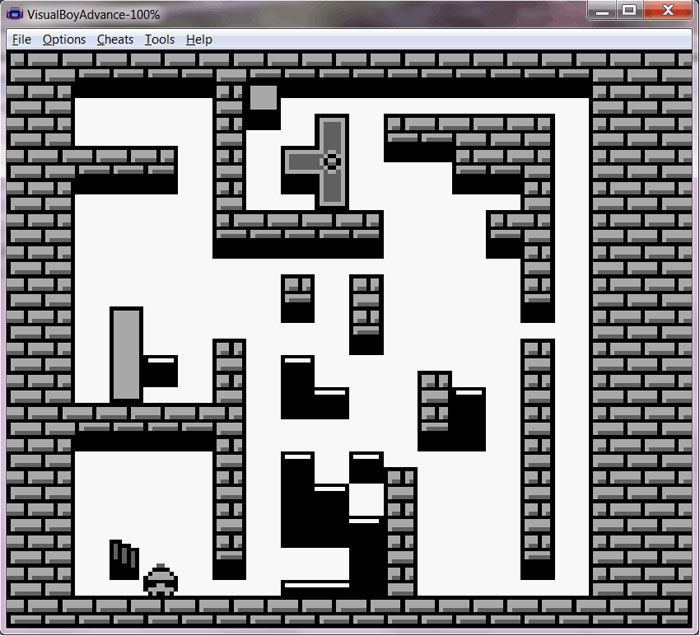
Kwirk and his girlfriend Tammy were both out "painting the town red" when they decided to explore the unnamed city's subterranean labyrinth below. While down there, Tammy suddenly disappears and Kwirk, with his Veggie Friends, now has to find her in the labyrinth and bring her home.
Gameplay
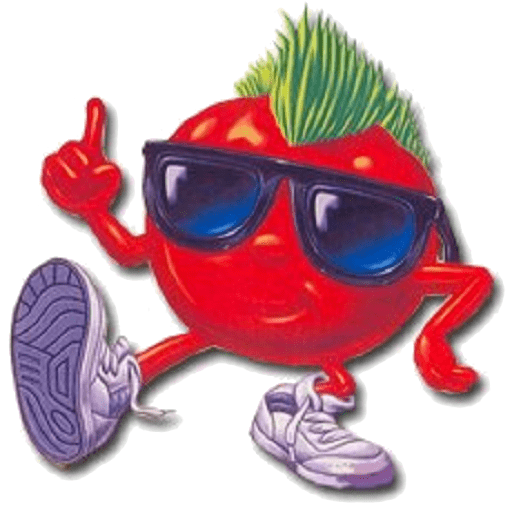
Kwirk has three game modes: Going Up?, Heading Out?, and Vs. Mode, each one with its own set of rules. The object is to get from one end of the room to the staircase on the other by rotating turnstiles, moving blocks, and filling holes with blocks.
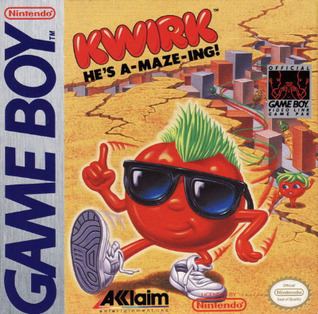
Kwirk has three skill levels: Level 1 - Easy, Level 2 - Average and Level 3 - Hard. After, one of two viewpoints may be selected: Diagonal or Bird's Eye. In Diagonal view, characters and blocks have shadows and appear in crude 3D, whereas in Bird's Eye view everything is 2D, viewed from the top down. The three skill levels and two viewpoints are featured in all three game modes.
Going Up?
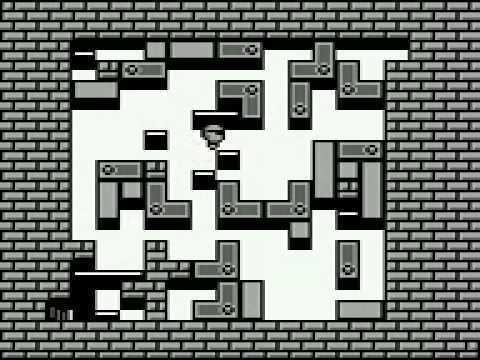
In "Going Up?," the object is to go from floor to floor by rotating turnstiles, moving blocks, and filling holes with blocks to get to the staircase on the other side. There are ten floors for each Skill Level for a total of thirty floors. Along the way at certain levels, Kwirk will receive help from his Veggie Friends, who can be taken control of by pressing the Select button. The Going Up? game mode offers a menu screen (upon a press of the A button) that allows the following;
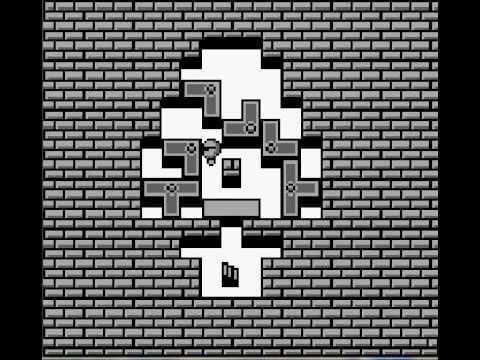
Scoring is based on the time taken to complete the stage and the number of steps taken to get to the stairs.
Going Up? serves as the story in which Kwirk has to rescue Tammy from the maze. Although the game features no storyline to progress the game, each stage ends with Tammy displaying the score, and after ten floors to each Level, Tammy and Kwirk are reunited.
Heading Out?
In "Heading Out?" the object is to complete a certain number of rooms consecutively to get a high score. There are a total of 99 rooms, any of which can be selected to run through by the player. Once started, the player sprints through each room solving the puzzle. Bonus Points are earned upon completion of each room. The Bonus Points start at 2000, decreasing during the course of the room, and resets after entering a new room. A timer is included to track the time through the course. After running through all the rooms the player's score is then recorded on a top four list.
Vs. Mode
Vs. Mode is a race using Heading Out? mode between two players. Each player selects a number of rooms to race through, but both player do not have to select the same number of rooms as a handicap. Then a Contest is selected to decide the win condition; 1 Game playoff, or a Best of 3, 5, 7, or 9. Once started, the players can monitor each other through a Progress meter on their respective screens. The match ends when one player completes all the rooms.
Obstacles
In each room, Kwirk must navigate around and interact with various obstacles in order to progress.
Obstacles:
Kwirk’s Veggie Friends
At certain points in the game "Going Up?," one or all of Kwirk’s Veggie Friends will appear to help. They don’t have special abilities, but instead play exactly like Kwirk to allow maneuvers that weren't possible with only one character. The player switches between characters by pressing the select button and all of the Veggie Friends must be brought to the stairs to clear the floor.
The Veggie Friends:
Reception
Kwirk got mixed reviews, most of them were positive. Reviewers praised the games challenging difficulty. According to Mean Machines, which rated the game a score of 85%, Kwirk is one of the "simple, but very addictive" puzzle games, as stated by Julian Rignall. Because of the number of different screens, it doesn't "become boring quickly". Rignall stated the game gets "incredibly hard" and "really taxes" the player's brain. Matt Regan criticised that once the player has solved each puzzle, there is "no interest left". The German magazine Video Games reviewed Kwirk in its very first issue and awarded it a "Video Games Classic" due to a score of 85%. The magazine's editor Stephan Englhart praised the game's variety of modes and puzzles. He stated that Kwirk captivates with a "well-elaborated and harmonious overall concept" ("wohl durchdachtes und stimmiges Gesamtkonzept").
Legacy
Kwirk’s only appearance outside of the Game Boy game, was on television was in the show Video Power, as part of a 15-minute cartoon short called The Power Team, which featured characters from Acclaim games. He usually went berserk whenever anyone calls him a "to-MAH-to" and not a "to-MAY-to".
On November 16, 1990, Kwirk got a Japan-only Famicom Disk System version titled Puzzle Boys (パズルボーイズ). As with the Japanese release of Puzzle Boy, Kwirk didn't appear in it.
Next, a Puzzle Boys spin-off called Spud's Adventure, known as Totsugeki! Valetions (突撃ばれいしょんず), was released for the Game Boy on January 25, 1991. Unlike Kwirk, in the US Spud's Adventure was published by Atlus instead of Acclaim Entertainment, due to Acclaim losing their license in publishing Atlus's Puzzle Boy series of games. Unlike Kwirk, Atlus did not change the protagonist into a tomato, but left him as his original character of a potato, translating his name as "Spud."
Next, Puzzle Boys was ported to the PCEngine on February 22, 1991. Again, it was only released in Japan.
This game later got a proper sequel in the US titled Amazing Tater (known in Japan as Puzzle Boy II) for the Game Boy. Like Spud's Adventure, the protagonist remains a potato called "Spud."
A port for the TI-89 calculator exists, written by Ludvig Strigeus.[1].
